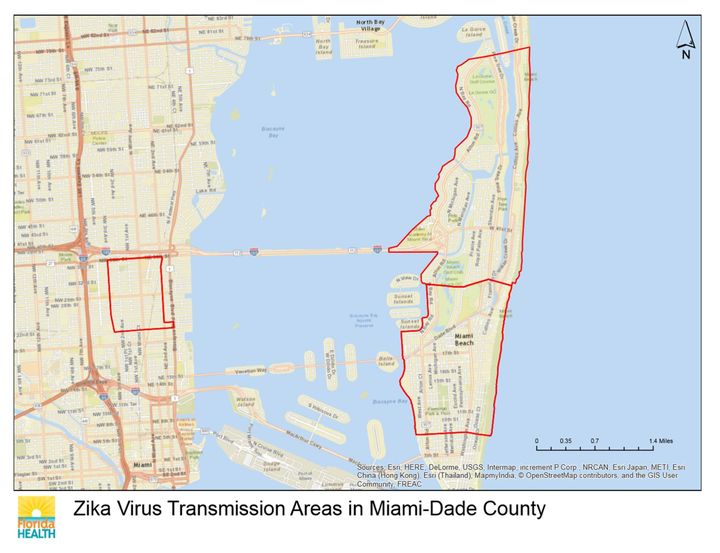
First, the good news in Miami: Wynwood, the first U.S. neighborhood to experience local Zika virus transmission, is no longer considered an active transmission zone because no new cases have been reported since early August.
The U.S. Centers for Disease Control And Prevention updated their travel warning for the one square mile area Monday and no longer advises pregnant women to avoid Wynwood. Of course, pregnant women and their partners living in or around the area should still take steps to prevent mosquito bites, and would-be travelers can still consider postponing non-essential travel to Miami-Dade County in general, CDC officials said.
Now for the bad news: Zones of active transmission in the city of Miami Beach, a popular tourist destination located primarily on a barrier island east of mainland Miami, have tripled from 1.5 square miles to 4.5 square miles, reports Reuters. The Florida Department of Health expanded the area on Friday, after researchers found three women and two men who had experienced Zika virus symptoms within one month of each other, according to a release from Gov. Rick Scott. Four of those cases were new, and together the five of them were from the expanded Miami Beach zone.
At last count, the state has identified 93 non-travel related cases of Zika virus, including people who live outside Florida but contracted Zika there. Of these, 35 cases come from the active zone in Miami Beach.
In the map below, provided by the Florida Department of Health on Friday, the red zones on the right are areas of active transmission in Miami beach. The smaller zone on the left is the Wynwood neighborhood, which is no longer considered a zone of active Zika virus transmission:

The CDC first issued travel warnings to pregnant women about the Wynwood area on Aug. 1. While this guidance is no longer in effect for that small neighborhood, health officials still advise that people who traveled in that area from June 15 to Sept. 18 -- the day before the travel warning was lifted -- wait at least eight weeks before trying to conceive. Additionally, men who actually had Zika virus symptoms should wait at least six months before trying to conceive.
CDC director Dr. Tom Frieden congratulated Florida health officials for their successful fight against mosquitos in the Wynwood area. However, he warned residents that cases could still come back.
“We’ve reached this point because of the tremendous progress with mosquito control in the affected area, including the combination of aerial application of the larvicide... and rigorous investigation of possible Zika infections by Florida health officials,” Frieden said. “Still, we encourage people not to let down their guard. We could see additional cases.”
People who live or visit in Miami-Dade ounty should still take precautions like wearing insect repellent, wearing long sleeves and pants and using condoms during sex to prevent mosquito bites and sexual transmission of Zika virus.
